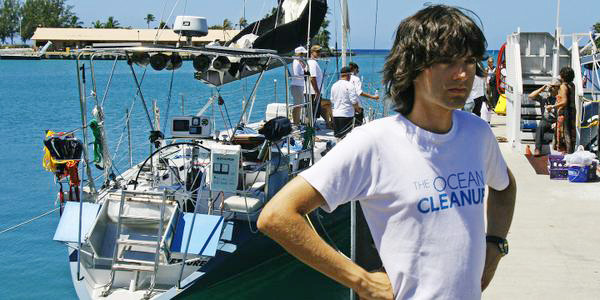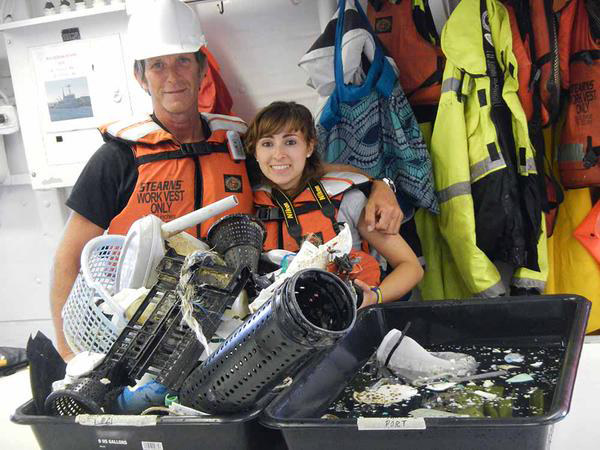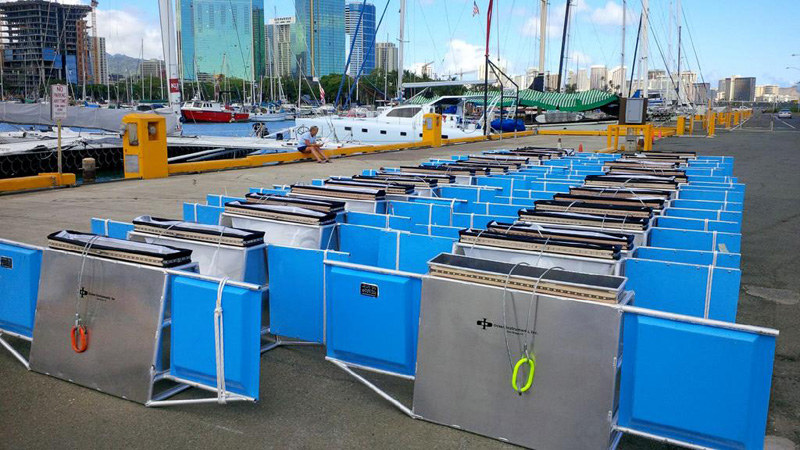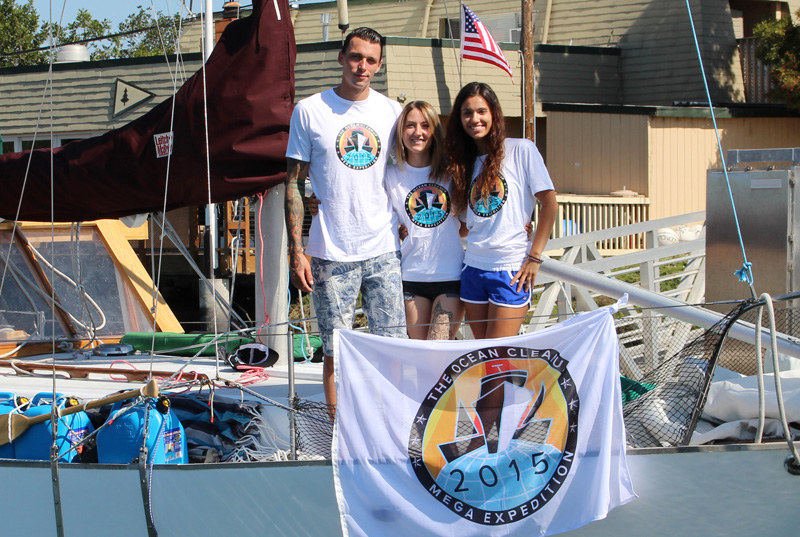
First Steps Toward Cleaning Up the Gyre

As the Transpac fleet returns from Hawaii to the West Coast this week, some boats are carrying atypical cargo, as their crews have taken on the role of citizen scientists. More than 20 sailboats are participating in what’s called The Mega Expedition, an ambitious crowd-funded survey of the North Pacific Gyre, or Garbage Patch, that will facilitate a cleanup effort slated to begin in 2020.
A testament to the idealism of youth, the Expedition’s parent project, The Ocean Cleanup, evolved from the ideas of a then-16-year-old Dutch student named Boyan Slat who learned about the dire state of ocean pollution several years ago and decided to do something about it. Since then, his plan to place collection devices in key offshore locations has gathered an ever-enlarging groundswell of support — including that of at least one Silicon Valley CEO.

©2015Latitude 38 Media, LLC
Having participated in training sessions in Hawaii, the returning Transpac-ers will travel east on specific latitude lines, and will attempt to deploy collection trawls up to six times a day during their crossings. Their ‘catch’ will be labeled with lat-long info and stored until arrival, when it will be sent to a lab in Delft, Netherlands for analysis.
Slat himself will make the crossing aboard the Nelson-Marek 68 Swiftsure, which will depart this week. "To further develop our cleanup technology, it is essential to know how much plastic is out there," he says. "The Mega Expedition should answer that question for us. My sincere thanks goes out to the crews of the participating vessels for making this crazy idea a reality." Last year he was heralded as the 2014 Champion of the Earth, the United Nations’ highest environmental accolade.

©Latitude 38 Media, LLC
Meanwhile, three eager and idealistic young Canadians will depart tomorrow from San Francisco to Hawaii, doing trawls along the way. Then they’ll turn around and come right back to the West Coast gathering data a second time. The Rawson 30 Stay Gold is the smallest boat participating in the Mega Expedition, but her crew, Jason Frechette, Nicole Belleau and Wayana Carrier Doneys — all in their mid-20s — may well be the most enthusiastic. "I’m very proud to be involved with this," says Wayana. "It’s very impressive that in the beginning no one believed in him [Boyan], but now there are hundreds of scientists all over the world who are working with him — and he’s now only 20 years old."

©Latitude 38 Media, LLC
Look for more on the Stay Gold crew and the Mega Expedition in the September issue of Latitude 38. You can learn more about the project here and follow the fleet via Yellowbrick Tracking here.
